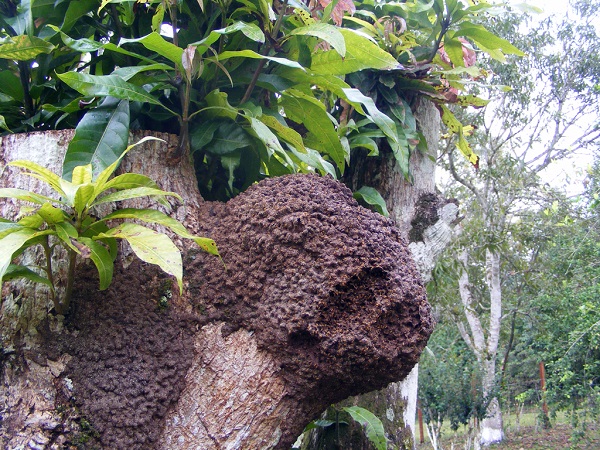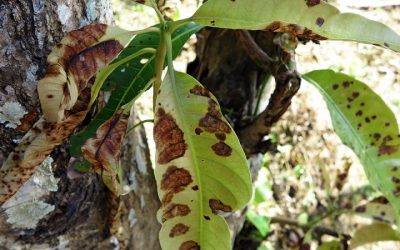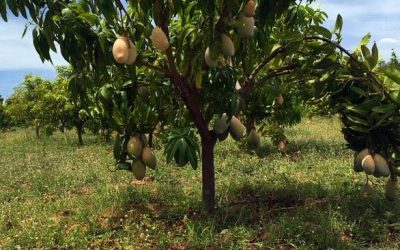Dealing with termite infestation in mango trees

Termites on trees typically have walk under a brown gallery or tunnel that they construct. This is to protect them. When you break that material the termites are visible. They should be white, often with darkened heads.
Termites do not attack healthy trees so it is likely that your mango trees are suffering some stress. Termites consume dead wood in preference to living wood. You should work at controlling the amount of dead wood around the trees.
Promote conditions for healthy plant growth to prevent termite damage. Termites more often attack sickly or water stressed plants than healthy plants.
Avoid unnecessary injury to the plants as this may facilitate entry of termites.
Plough field to destroy termites’ nest, runways, and tunnels and to expose them to predators, such as ants, birds, chicken, etc.
Practise crop rotation to reduce the build-up of termites.
Planting the same crop every cropping season makes it susceptible to termite attack.
Grow crops in mixed cropping systems to lessen termite damage.
Know and make a list of the annual crops that are attacked by termites.
Remove plant residues and other debris especially moist and decaying woods. However, take into account that termites may attack plants if there is no other food available, for instance if there are no other sources of organic matter such as soil humus and mulch; therefore ensure there is plenty of soil humus; avoid bare, dry disturbed, organic-deficient, residue-free soil.
Inspect plants, especially the pruned fruit trees, for termite attack. Do this either early in the morning or late in the afternoon.
Remove affected plants or part plants, and kill the termites; they are normally found inside the hollowed parts.
Soap water spray would also work as well as a neem spray. They are not likely to be nesting in the tree so the more you destroy and break the trails they established to reach the tree the more effective your control can be.


